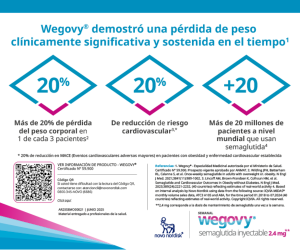Does the treatment of dyslipidemia differ?
Keywords:
diabetes, dyslipidemiaAbstract
Although therapeutic options for the care of people with type 1 diabetes have improved, allowing them to live longer and better, life expectancy is still around 10 years less, with atherosclerotic cardiovascular disease (ACVD) being the number one cause of morbidity and mortality.
In addition to the typical or modifiable cardiovascular risk factors (high blood pressure, hypercholesterolemia, obesity, smoking, family cardiovascular history, etc.), long-term hyperglycemia has a significant impact by inducing oxidative stress, vascular inflammation, monocyte adhesion, arterial wall thickening and endothelial dysfunction; there are significant qualitative and functional abnormalities of lipoproteins, even in patients with good control. In addition to cardiovascular disease, there is frequently an association with nephropathy.
In addition to all the factors mentioned, known as modifiable, a non-modifiable risk factor plays a transcendental role; This is the age at diagnosis; patients with type 1 diabetes with early onset have a substantially higher cardiovascular risk.
However, even in patients with type 1 diabetes with good diabetes control and without additional cardiovascular risk factors, the risk of CVAD remains significantly higher, indicating the involvement of potential complementary factors: hypoglycemia and glucose variability, as well as immune system dysfunction, exacerbate inflammatory pathways and can worsen CVAD. Finally, often as a result of treatment, patients are overweight or obese, which aggravates CVAD with pathophysiological mechanisms similar to those observed in type 2 diabetes.
The risk of death from any cause was 1.5 times higher in type 1 diabetes at age >50 years, with a similar trend for cardiovascular death.
Assessment of LDL cholesterol, HDL cholesterol, triglycerides, and if possible apolipoprotein B (as the gold standard for dyslipidemia), albuminuria/creatininuria in a single sample, and ideally, highly sensitive C-reactive protein, is essential.
Management of dyslipidemia, especially with statins, has been shown to be of great benefit in preventing clinical ASCVD. Since many patients fail to achieve the low LDL cholesterol levels recommended in these guidelines, adjunctive therapy, such as the addition of ezetimibe, bempedoic acid, or PCSK9 inhibitors, is often required to achieve these goals.
References
I. Groop PH, et al. Excess mortality in patients with type 1 diabetes without albuminuria-separating the contribution of early and late risks. Diabetes Care 2018;41:748-754. doi: 10.2337/dc17-1618.
II. Hodgkinson CP, et al. Advanced glycation end-product of low density lipoprotein activates the toll-like 4 receptor pathway implications for diabetic aterosclerosis. Arterioscler Thromb Vasc Biol. 2008;28:2275-2281.
III. Chait A, et al. Lipid-lowering in diabetes: An update. Atherosclerosis 2024;394:117313.
Downloads
Published
Issue
Section
License
Copyright (c) 2024 on behalf of the authors. Reproduction rights: Argentine Society of Diabetes

This work is licensed under a Creative Commons Attribution-NonCommercial-NoDerivatives 4.0 International License.
Dirección Nacional de Derecho de Autor, Exp. N° 5.333.129. Instituto Nacional de la Propiedad Industrial, Marca «Revista de la Sociedad Argentina de Diabetes - Asociación Civil» N° de concesión 2.605.405 y N° de disposición 1.404/13.
La Revista de la SAD está licenciada bajo Licencia Creative Commons Atribución – No Comercial – Sin Obra Derivada 4.0 Internacional.
Por otra parte, la Revista SAD permite que los autores mantengan los derechos de autor sin restricciones.




























